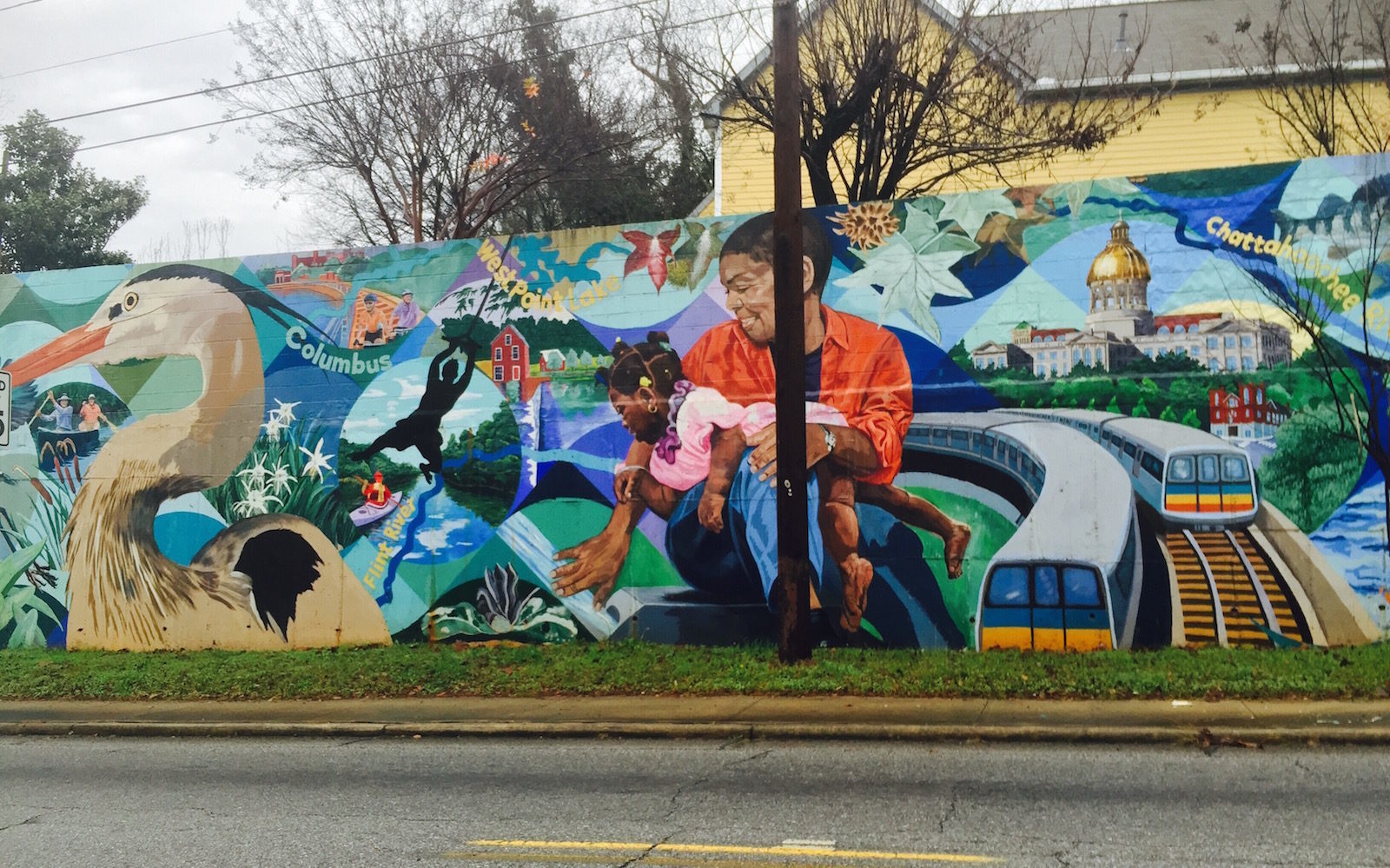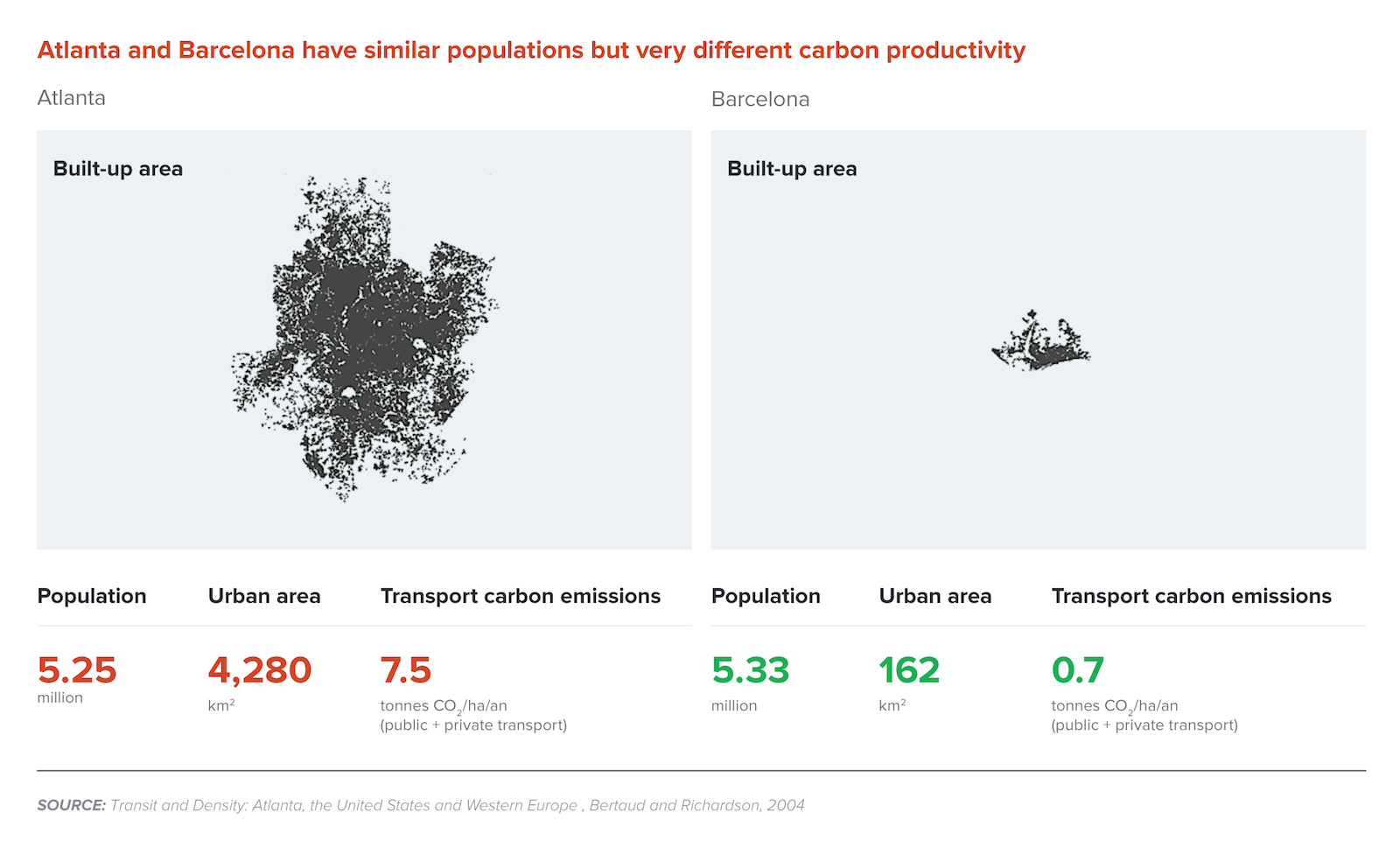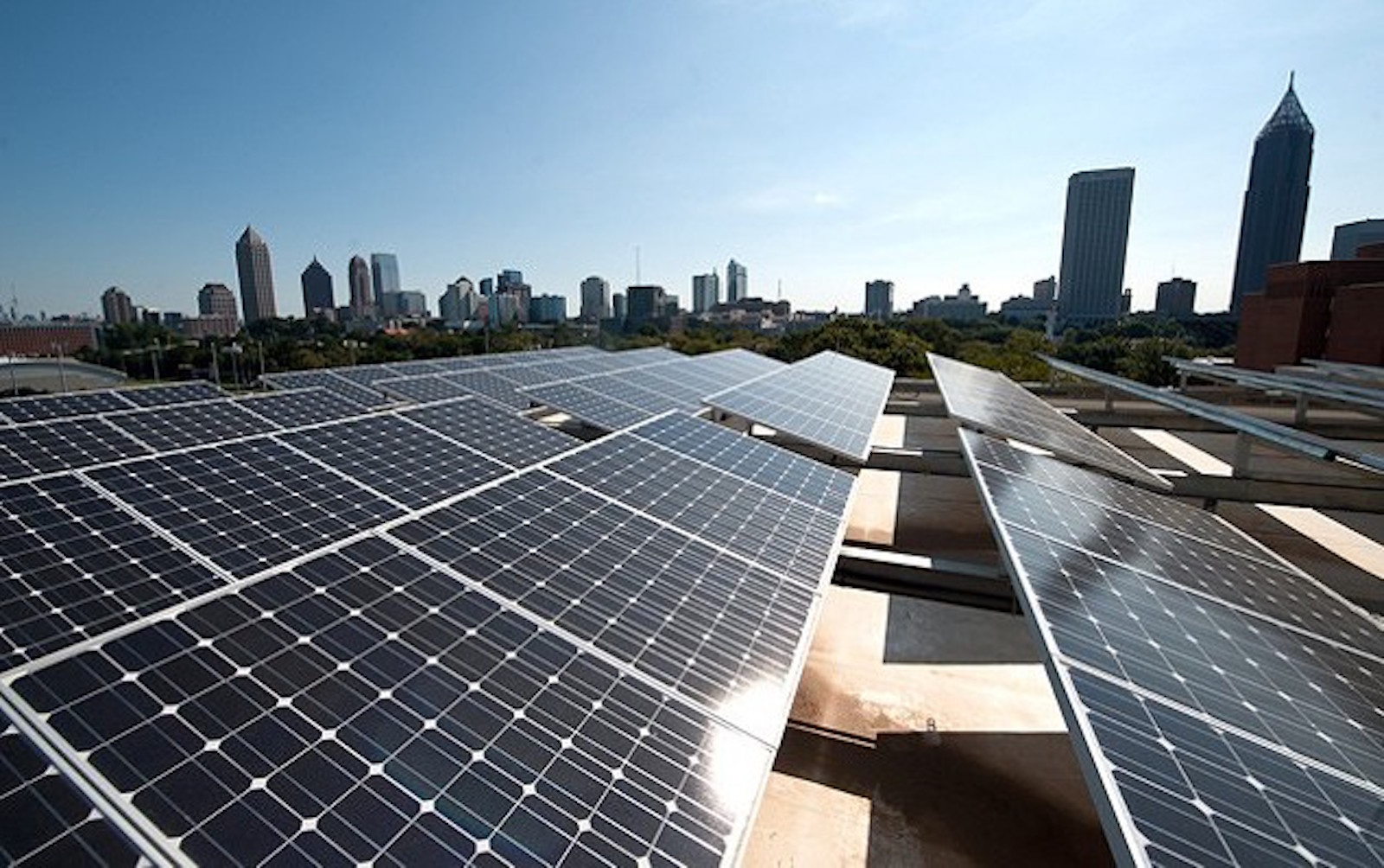Every fall, EcoDistricts brings the EcoDistricts Summit to a new city – exploring the city’s cutting edge sustainable development projects and engaging local city makers in advancing the next generation of innovative urban regeneration and community development projects.
From October 10-11, 2017, we will gather in Atlanta, Georgia — often referred to as the capital of the south and one of the country’s most vibrant and forward leaning cities. Atlanta is a city of contrasts and paradoxes — a city rich in culture, equity, and sustainability conversations, but burdened by some of the highest rates of economic and racial segregating and low density sprawl. In order to prepare for Atlanta and to get you excited about joining the one of the most participatory, dynamic, and meaningful gatherings dedicated to advancing urban sustainability, we’ve identified the following themes and issues that are framing the urban regeneration industry in Atlanta — equity, art and culture, connectivity, and sustainability.
We look forward to seeing you in Atlanta.

Equity, and Inequity, in a Civil Rights Town
As the nation’s fourth-largest majority African American city, issues of equity and inclusion have always been at the forefront of city’s political and community life. Atlanta was the heart of the U.S. Civil Rights Movement in the 1960s — and that legacy endures today. It is home of the Martin Luther King, Jr. National Historic Site and National Center for Civil and Human Rights. Despite this rich Civil Rights legacy, the city has suffered through issues familiar to many major metropolitan centers, including consequences of urban renewal, displacement, and gentrification.
In 2016, Bloomberg ranked Atlanta second most unequal city in the U.S. Currently, the majority of Atlanta’s growth is concentrated in northern, affluent suburbs. What’s more, Atlanta is projected to gain two million more residents in the next 25 years. Most high paying jobs are located in neighborhoods north of downtown and up to 30 miles outside of the city. As a result, the south side of the city — including many historic African American neighborhoods — disproportionately experience poverty, disinvestment, and unemployment.
Fortunately, a number of engaged and local leaders, including government, higher education institutions, private companies, and community organizations are working to reposition many of Atlanta’s underserved neighborhoods. The East Lake neighborhood is considered a national model in linking the issues of education, housing, and health. Its initiatives are giving way to more ambitious efforts in the City’s westside. One of these projects is the AVE Ecodistrict, an area surrounding the Atlanta University Center and home to the city’s historically black universities and colleges. For more than three years, the Ecodistrict has been working with community stakeholders and residents to improve the quality of life for the highly distressed set of neighborhoods adjacent to AUC.
The Atlanta Beltine is a 22-mile corridor that is connecting 45 urban neighborhoods — many of which are low-income and primarily minority areas — through a network of parks, trails, transit-oriented development, and public transportation. The brainchild of urban designer Ryan Gravel, the Beltline supports affordable workforce housing, economic development, job creation, public health, streetscapes, public art, environmental clean-up, and historic preservation. Numerous partners, like Gravel, Nathaniel Smith of the Partnership for Southern Equity, Invest Atlanta, and the Atlanta Regional Commission, have gone to great lengths to ensure that equitable development and use of the Beltline remain central to its progress.
And in early 2017, the TransFormation Alliance won a $1 million grant from the Strong, Prosperous, and Resilient Communities Challenge (SPARCC) to implement equitable development initiatives along the currently underserved Lee Street corridor is Southwest Atlanta. The corridor is bordered by two MARTA public transit stations and will serve as a model for equitable transit-oriented development in the city. The Alliance plans to use the grant to advocate for racial equity, health, and environmental consciousness in the Lee Street corridor development and across the city. They also plan to deepen capacity building opportunities for established and emerging community leaders and civic institutions, and to incorporate arts and culture-based community engagement to provide a platform to engage and discuss issues.
Finally, the Center for Civic Innovation’s Westside Innovation Lab was launched in 2016 to identify and support community-driven and community-built ideas and interventions within neighborhoods on the Westside of Atlanta. Eight fellows have been selected to receive business training, mentorship, partnership, and early stage capital for projects — ranging from youth-based initiatives to sustainable agriculture — that will contribute to social and economic development of Westside neighborhoods.

Becoming a Cultural and Artistic Hub of the Region
A city with long-standing, vibrant African American culture, Atlanta today is a U.S. center for art, music and education, much of which reflects the African American heritage of the majority of its residents.
The city has always played an integral part in the music scene, starting as a hub for country music, then punk rock, and now the heart of the hip hop business and music scene. This hip hop movement began in the 1980s and accelerated in the 1990s with the success of LaFace Records and the group Outkast. Since the start of the 21st century, Atlanta has been considered “hip-hop’s center of gravity,” and the city is a capital of Southern hip hop, R&B, neo soul, and gospel music. It’s also home to numerous production and record companies. On top of the Atlanta’s hip hop roots, the city also is becoming a mecca of the film industry, giving rise to prominent African American stars such as Donald Glover and Tyler Perry. The exploding music and film industry has significantly boosted Atlanta’s economy and international acclaim over the past two decades. Atlanta also is considered a national center for classic arts, and has prominent theaters, art museums, and design schools.
Additionally, art and culture is being integrated in to sustainable and equitable development initiatives throughout Atlanta. Public art and sculptures stand out along the Beltline, thanks to the Art On The Atlanta Beltline initiative, which selects new and returning artists to showcase dynamic installations and performances each year. On walls, viaducts and storefronts across the city, the Living Walls organization has commissioned over 100 murals by local artists to promote, educate, and change perspectives about public space in Atlanta communities. Many of the art installations and murals across Atlanta pay homage to the city’s rich civil rights history, African American cultural heritage, and continuing race and equity challenges. The Savannah College of Art and Design even offers a Design for Sustainability degree that prepares students to promote design as a mechanism to advance sustainability in the community.
Connectivity That’s Catalyzing the Move Back into the City
Historically, Atlanta has been known for its extensive highway system, which has been a leading factor contributing to the city’s infamous suburban sprawl. The development of freeways in the 1950s, as well as white flight and racial segregation, facilitated the move into the suburbs for many of the city’s middle-class residents. In less than 50 years, downtown Atlanta and close in neighborhoods lost over 20 percent of their population (100,000 people). Today, however, the city’s urban core is becoming denser as people move into downtown to live and work. And in the next 25 years, Atlanta is expected to gain another 2.5 million people.
As a response to the new and projected growth in the region, the City launched the Atlanta City Design Project in 2016. Led by Tim Keene of the Commission for Planning and Community Development, as well as designer Ryan Gravel, the project aims to envision what Atlanta should look like decades from now, determine how the city can grow equitable and sustainable, and engage residents and existing development plans to inform all future development in the city.
To change the tide on urban sprawl and high numbers of single auto trips into downtown, Atlanta has a number of infrastructure and transportation projects that are actively changing the urban fabric of the city. It is a monumental task. The “Connect Atlanta Plan” will guide the next 25 years of transportation policy and investment in ways that advance Atlanta’s larger vision of creating a more modern, vibrant and sustainable city. The controversial Atlanta Streetcar opened for use in December 2014 with an initial 2.7 miles of rail.
Relay, Atlanta’s citywide bike share program, launched in 2016 and includes 500 bikes at 50 stations in diverse neighborhoods. Eventually the program plans to expand to more City of Atlanta neighborhoods with 1,500 bicycles at 150 stations. And, as mentioned previously, the Beltline is sustainable redevelopment project that will provide a network of public parks, multi-use trails and transit along a historic 22-mile railroad corridor circling downtown and connecting many neighborhoods directly to each other. Each of these initiatives is improving the connectivity of previously underserved, disconnected urban neighborhoods across the city.
Solving Pollution Problems Through Sustainability Initiatives
Forbes ranked Atlanta as the nation’s most toxic city in 2009. The city also consistently receives poor air quality rankings from the National Lung Association and Asthma and Allergy Foundation. Much of the air pollution comes from the city’s traffic congestion issues, and it disproportionately affects low-income communities located close to major transportation nodes. In terms of water, the Chattahoochee River is the most heavily used water resource in Georgia and provides water to the Atlanta metropolitan area, but the river and its watersheds are heavily overused and polluted. Additionally, many underserved, predominately African American communities along the Proctor Creek urban watershed suffer from local flooding, sewage and pollution issues, negatively impacting public health, public spaces and property values.
But the city has made some encouraging progress to bring sustainability to the forefront of policy and planning initiatives. For more than three decades, The Southface Energy Institute has led sustainable policy and programs that promote sustainable homes, workplaces, and communities through environmental education, research, advocacy, and technical assistance in the city.
Ecologically, the city’s Vision 53 initiative outlines a framework of opportunity and preservation for the 53-mile Chattahoochee River Corridor in Atlanta, from Peachtree Creek downstream to Chattahoochee Bend State Park. To address flooding issues in neighborhoods along Proctor Creek, the city is part of the Urban Waters Federal Partnership. Numerous other partners and initiatives, including the Emerald Corridor Foundation and the organization Park Pride, are working to restore Proctor Creek and create safe and attractive green spaces that support community health and recreation.
The city is also working toward Climate Protection goals. Atlanta was the first city in the state to determine its municipal carbon footprint, and by 2010, Atlanta reduced it by more than 12 percent. Currently, the Power 2 Change citywide sustainability initiative establishes a basis for measurable sustainability action around 10 impact areas — including materials management and recycling, air quality, energy efficiency and renewables and water management. Atlanta ranks fifth in the development and construction of green buildings among the 30 largest U.S. markets. And the city is a member of the U.S. Mayor’s Climate Protection Agreement and was selected as a 100 Resilient Cities participant as part of the Rockefeller Foundation’s initiative. This boom of sustainability has resulted in the birth of more than a dozen environmentally focused non-profits in the past 25 years, as well as sustainability initiatives led by universities, including Georgia Tech, and Emory University’s WaterHub blackwater program.
Learn more and register for the EcoDistricts Summit.



